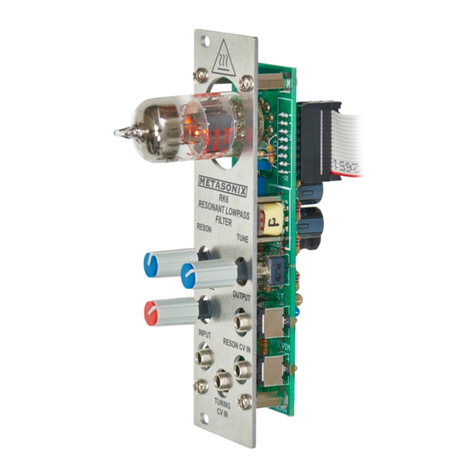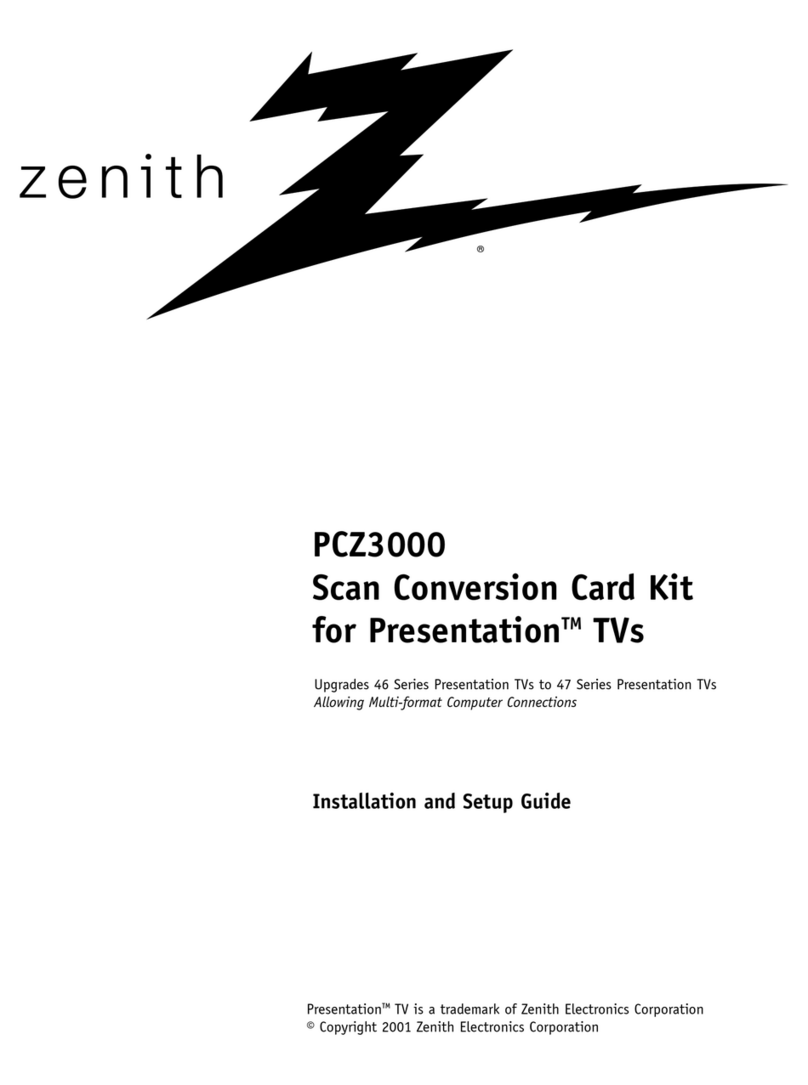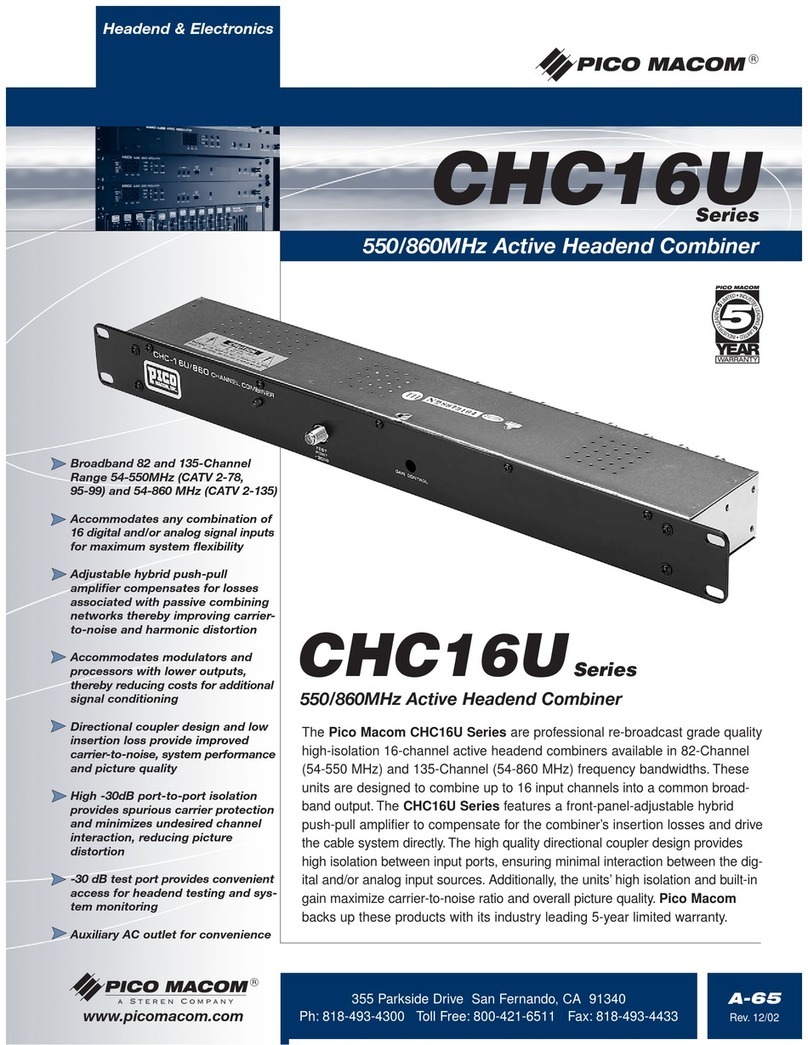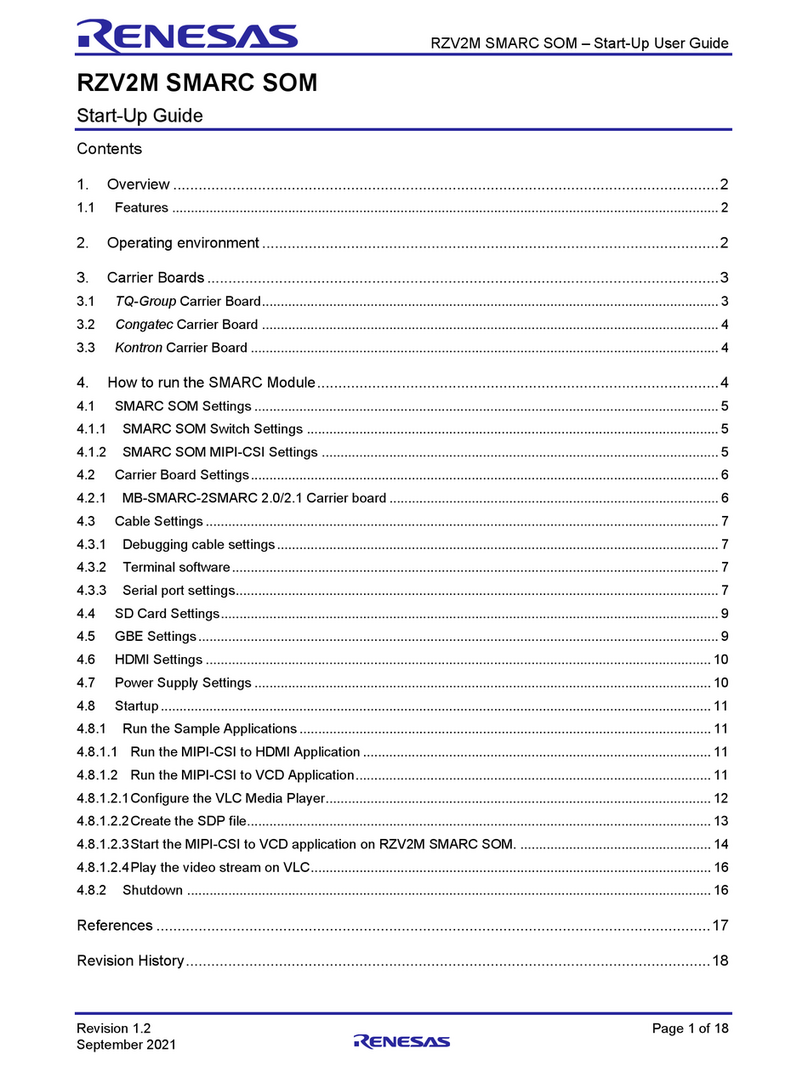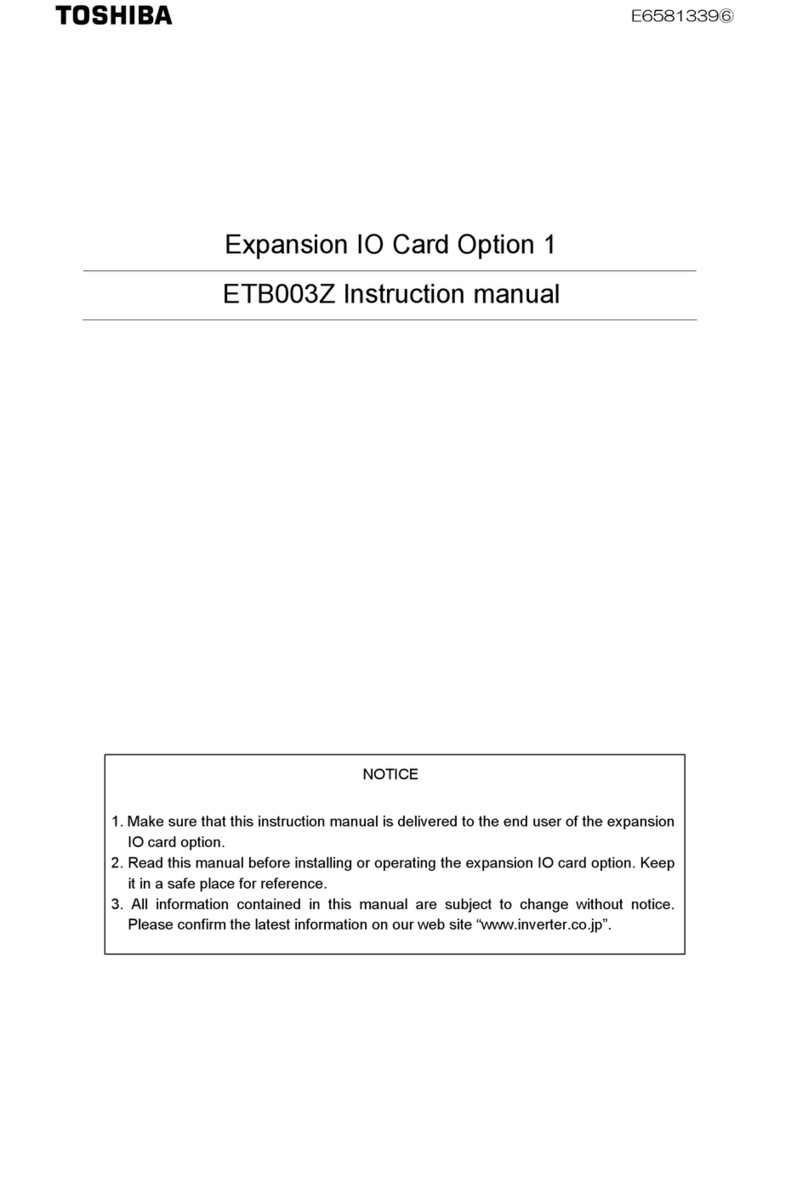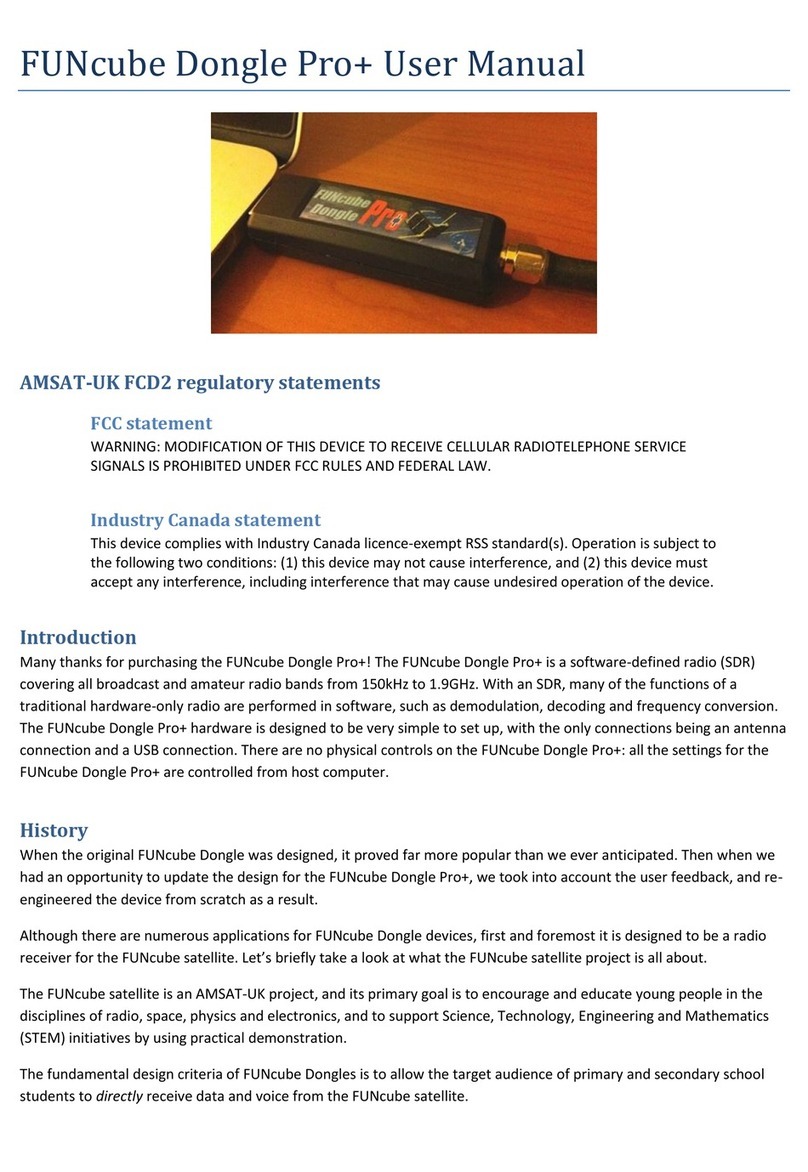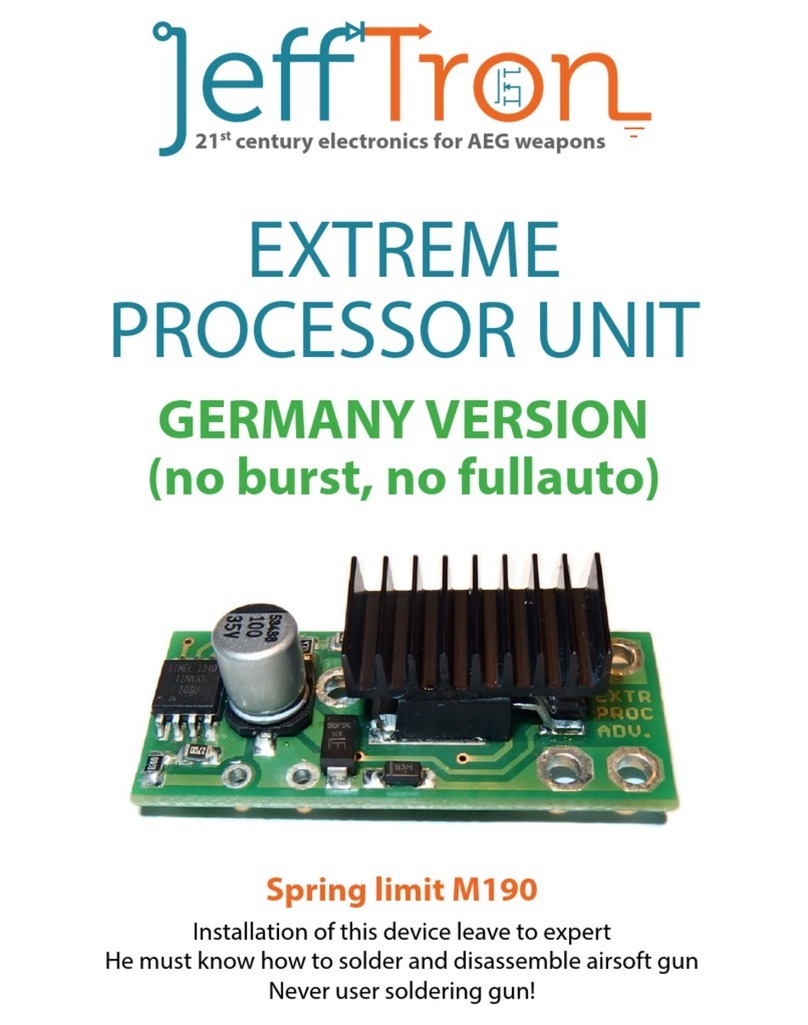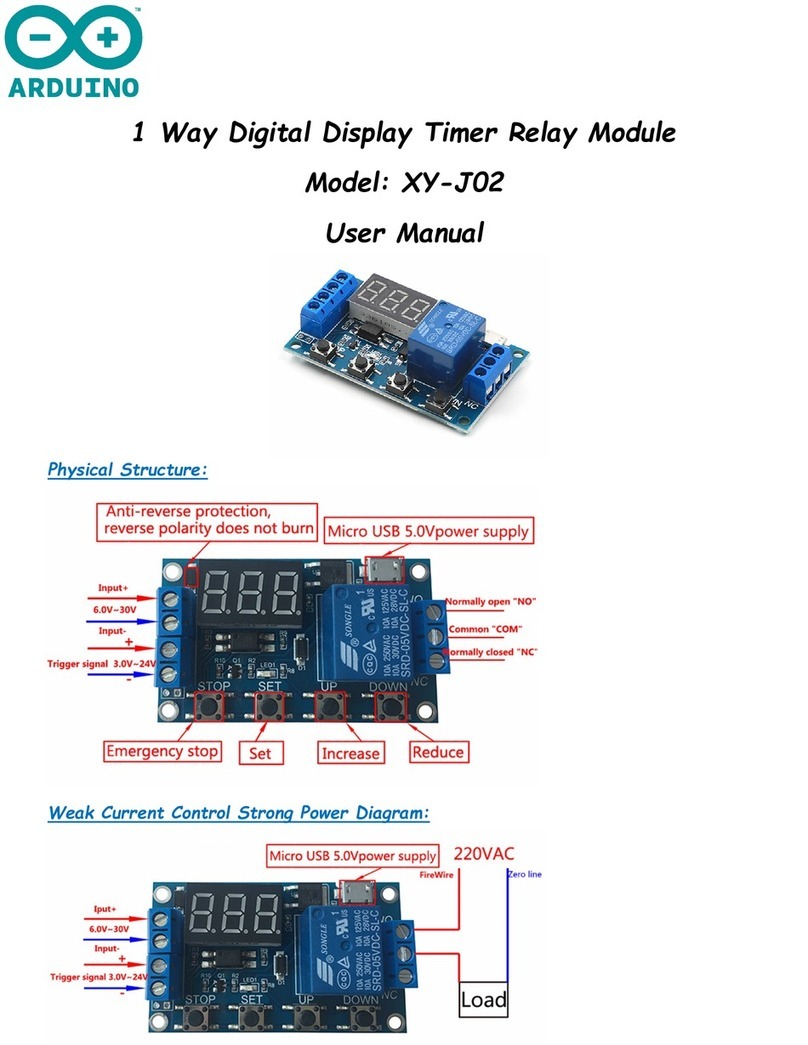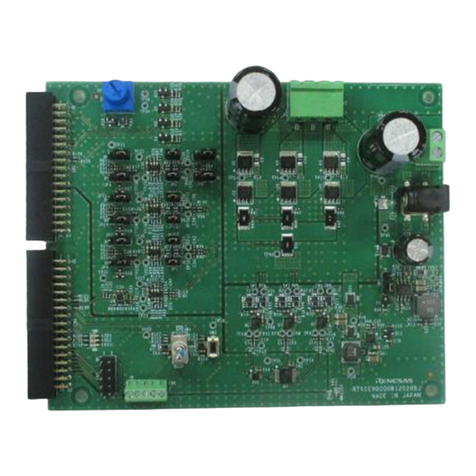METASONIX TS-22 User manual

TS-22 PENTODE FILTERBANK owner's manual
Metasoni ----------------------------------------------------------------- E. Barbour 5/2000
BEGINNER'S QUICK REFERENCE
The TS-22 is unlike any electronic audio processor you have tried before. So, we recommend reading this
manual carefully and thoroughly before starting. Experimentation with the TS-22 s controls is encouraged!
Don t be afraid to try various things.
1. Plug the TS-22 into a source of 100-120v AC power. It uses about 25 watts. (Check the label on the
back--if the unit is wired for 240v, attach 220-240v power.)
2. Plug a signal source into the AUDIO INPUT jack. A line-level signal is required.
3. Attach the AUDIO OUTPUT to an amplifier or mixing board s high-impedance
line-level input. Please use the volume control in the amp or mixer to control the listening level.
(Headphones are especially useful in understanding the TS-22 s sounds when first starting out.)
4. Set the controls of the TS-22 as follows:
INPUT LEVEL--full counterclockwise
FILTER CV SWEEP--fully counterclockwise
TUNE controls--all fully counterclockwise
RESONANCE controls--set to 9-o clock position
Turn on the power. Allow the unit to warm up for a few minutes.
5. Play the signal. Adjust the INPUT LEVEL and the volume controls in the amp or mixer to get a
comfortable signal level. (If the amp/mixer has a clipping level indicator, keep the TS-22 output level
below clipping indication.)
6. While sweeping the FILTER CV SWEEP knob back and forth slowly, turn the RESONANCE controls
(all 4 of them, one at a time) clockwise in SMALL increments until you get an obvious sweeping effect.
Note that at about the 10-o clock position, the filters will start to oscillate, beginning at the center of the CV
SWEEP.
7. Now you can sweep the FILTER CV SWEEP manually to get the filter effect. Also try increasing the
INPUT LEVEL to observe clipping distortion in the filters.
8. Or, if you have a modular synthesizer, use the CV output from an envelope generator or LFO to sweep it,
by connecting the CV to the FILTER CV IN jack. The FILTER CV SWEEP control then becomes a level
control for this CV, allowing increase of the sweep range (by turning it clockwise).
9. The TS-22 also has a built-in voltage controlled amplifier (VCA). Normally it is bypassed. You can use
it to impose an envelope contour on your signal, by attaching the output of a modular-synth envelope
generator to the VCA CV IN jack. The generator used must produce a peak voltage of at least +10v, and
return to zero volts when not triggered. Almost any of the currently-available modular-synth EGs will drive
the TS-22 with no problem.
HOW IT WORKS
-------------------
The TS-22 Pentode Filterbank contains four independent bandpass filters, made of simple "twin-T" circuit
designs. They are each based around a pentode vacuum tube, giving a unique sonic effect. (They pass some
of the raw signal through to the output, so your bass notes will be audible. Unlike those rigorously-designed
solid-state filters, the TS-22 was designed to sound musical, not like a laboratory instrument.)

All four filters mix down to another pentode tube, which is used as a VCA (optionally). This is another
design which was little used in the past--by applying the control voltage to the "screen grid" of the pentode,
its gain can be varied--from total cutoff up to a gain of 100 or more. (It doesn t cut totally off, you might
hear a very very low signal when you envelope is not triggered--this is normal. If total cutoff is demanded,
which is not usually a requirement, the TS-22 may be followed by a noise gate.)
CONTROLS
-------------
The controls on the LEFT of the TS-22 control the input preamp and sweep all four filters simultaneously.
INPUT LEVEL--just what it says--controls input volume. The INPUT LEVEL control goes straight into all
four filter tubes.
FILTER CV SWEEP--if nothing is plugged into the FILTER CV IN jack, this control can be used to sweep
all 4 filters simultaneously. The usual effective range is from about 9 o clock to 3 o clock on this knob.
FILTER CV IN--plug a 1/4" cable in here to control the filter sweep with an external control voltage. It is
set at the factory for a full 1 -octave sweep to be obtained with a 0 to 1 volt change, IF the FILTER CV
SWEEP is set fully clockwise. The FILTER CV SWEEP may be used to decrease the actual filter sweep
range, if the CV sweeps over a greater than 0-1 v range. A solid-state control circuit is used to sweep the
filters from this input--recommend not driving this input with control voltages greater than +10 volts or less
than 0 volts.
The controls on the RIGHT of the panel are the individual filter controls.
TUNE--each filter is independent of the others, except for their signal inputs,
signal outputs, and the FILTER CV SWEEP. Each filter may be tuned to a different point on the one-
octave range of the filter, using its own TUNE knob. The panel around the TUNE knobs is marked to
indicate the approximate location of each equal-tempered major division within that 1-octave range. The
range is from F2 to F3. The TUNE controls set the lowest sweep point for that filter; the FILTER CV
SWEEP still affects all the filters in parallel (they can still sweep from that setting up to the maximum,
approximately the F3 note).
RESONANCE--each filter may also have its "ringing" or resonance effect set independently. This is the
"sharpness" or "peakiness" of the bandpass peak. By turning RESONANCE for a filter fully
counterclockwise, that filter is effectively removed from the circuit. At approximately the 10 o clock point
on the RESONANCE knob, that filter will start to oscillate, or generate its own tone. This first becomes
apparent at the midpoint settings of the TUNE or FILTER CV SWEEP controls. Turning RESONANCE
fully clockwise forces that filter to oscillate strongly--this allows its use as a signal source, or allows it to
cross-modulate with any input signal.
OUTPUT--the output signal jack, line-level. The volume through the TS-22 varies greatly with settings of
all the controls, which also interact in some cases.
VCA CV IN--for injecting a 0 to 10 volt control voltage for controlling the output level. This jack directly
drives the VCA tube s screen grid, it cannot be damaged with excessive or negative voltages, although zero
or negative voltage will simply cut off any output signal. The VCA is set to a fixed gain if no plug is placed
in this jack, thus effectively bypassing it.
MAINTENANCE
-------------
When mounting the TS-22 in an EIA 19" rack, note that it produces some heat. It will not get as hot as a
guitar amp--but convection cooling must be allowed for. We recommend at least 1/2" space above and
below it to allow airflow. The TS-22 uses a 0.5 amp, 5x20mm fast-blow fuse (in 100-120v countries).
This fuse SHOULD NOT BLOW under normal circumstances. If it blows repeatedly, contact Metasonix.

Obviously, you should keep the TS-22 cool and dry. Moisture can ruin it instantly.
The tubes in the TS-22 will PROBABLY last for many tens of thousands of hours. They are being run
conservatively. (Our warranty is for one year from date of purchase.) Nevertheless, should you need to
replace any of them, this is the replacement guide:
WARNING: the TS-22 is full of high voltages. If you are not e perienced in working
with tube electronics, leave the following to a competent servicer!
Unplug the unit and let it sit for at least 15 minutes, to give the capacitors time to discharge.
Remove the top cover--eight small Phillips-head sheet metal screws. Be sure to replace the cover and
screws when done. The tubes are as follows. Be careful not to break any wires when removing or inserting
a tube.
V1 is a 6AL5 or 6097. It is the plate-voltage rectifier tube that power the other circuits.
V2 thru V5 are the filter tubes. They are usually 6AK5 or 5654 small pentodes. A long list
of tubes will work in these sockets:
6AG5, 6AJ5, 6AK5, 6AN5, 6BC5, 6CE5, 6AH6, 6AK6, 6AU6, 6BA6, 6BD6, 6CG6, 6FD6,
6HR6, 6HS6, 6AS6, 6BH6, 6BJ6, 6BZ6, 6CB6, 6CF6, 6DB6, 6DC6, 6DE6, 6DK6, 6EW6,
6GM6, 6HQ6, 6JH6, 6JL6, 6LU6, 6CY5, 6EA5, 6EV5, 5654, 5725, 5749, 6136, 6189,
8136, 9001, 9003 will all function adequately. There may be other types which will work;
however, we recommend sticking with 6AK5/5654 types if possible.
V6 is the VCA/output stage. It is the same type as above, and the above-listed pentodes will also work in
this socket.
If the owner wishes to change the sweep range of the filters, or other parameters within the TS-22, please
speak to Eric Barbour of Metasonix first. The complexity of the TS-22 and its handwired design make
custom modifications more difficult than for conventional solid-state analog electronics.
For further information:
METASONIX
801 Woodside Road
PMB 14-247
Redwood City CA 94061 USA
www.metasoni .com
email eric@metasoni .com
helpline: 650-369-8272 after 7pm

Table of contents
Other METASONIX Computer Hardware manuals
Popular Computer Hardware manuals by other brands
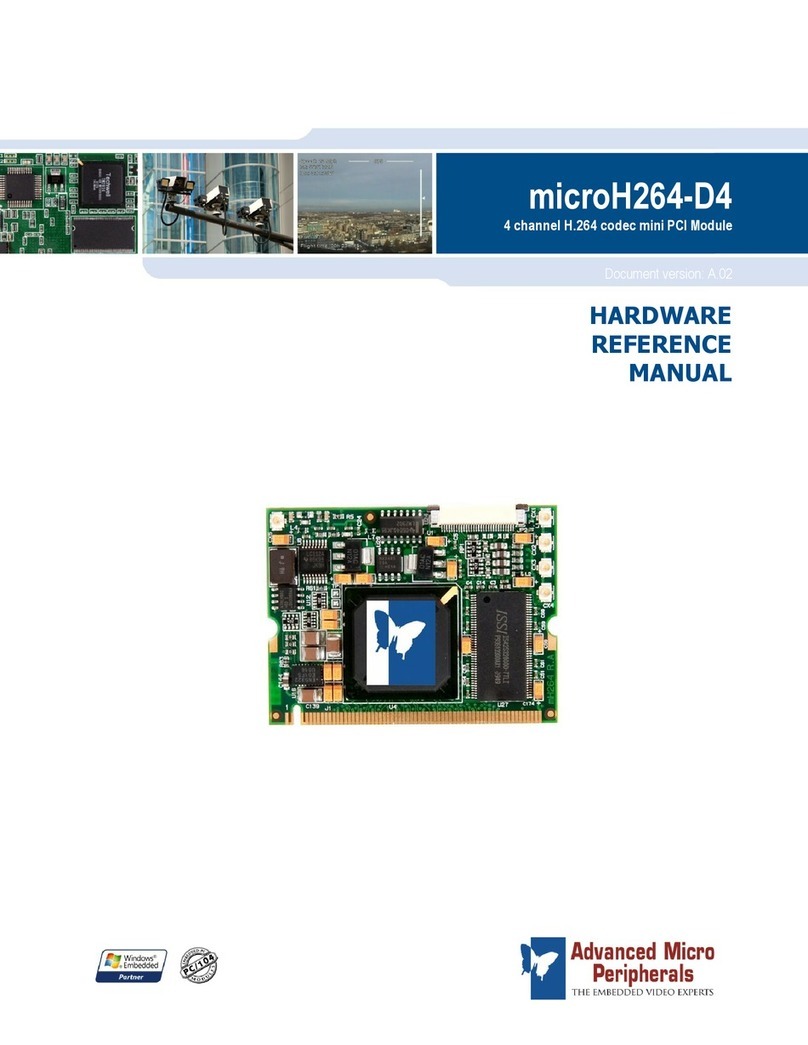
Advanced micro peripherals
Advanced micro peripherals microH264-D4 Hardware reference manual
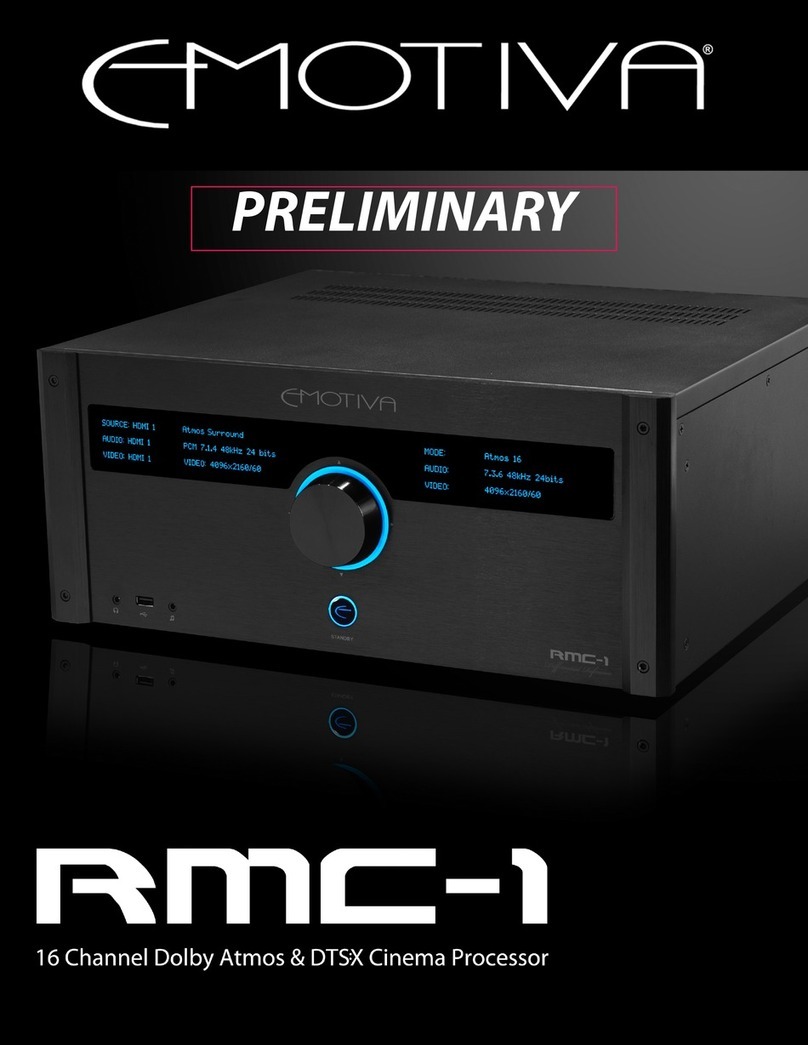
Emotiva
Emotiva RMC-1 Preliminary
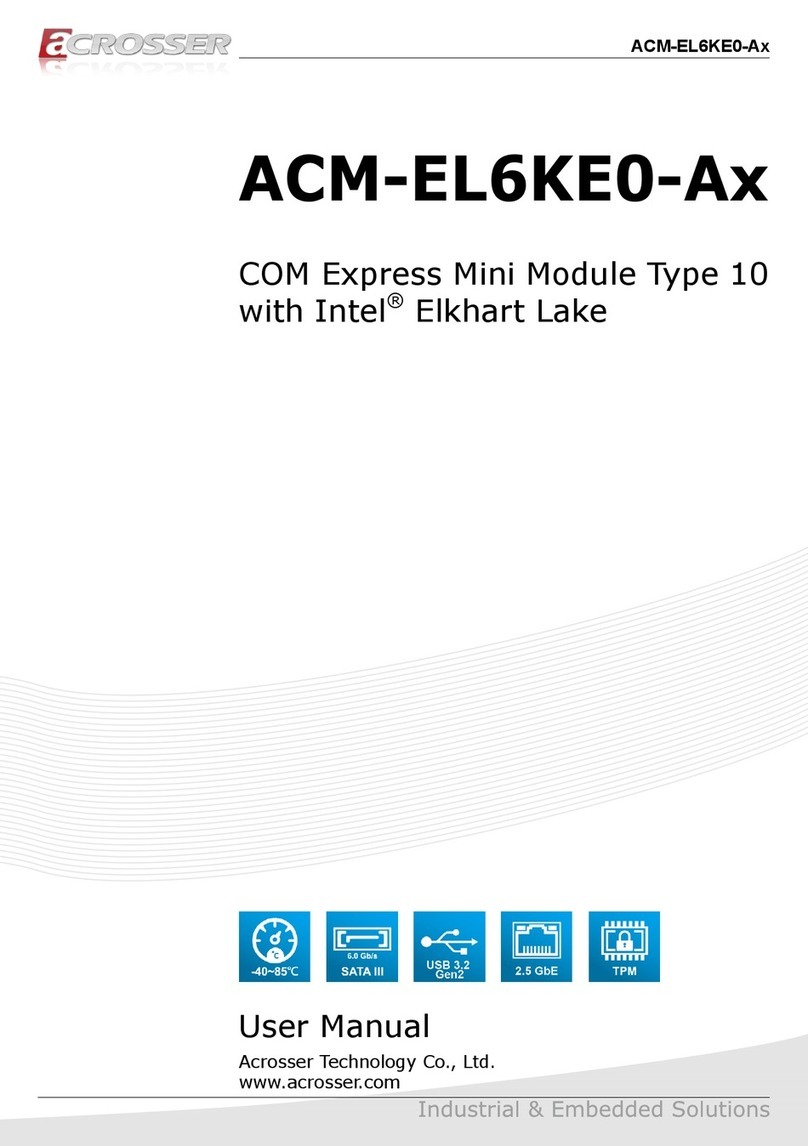
Acrosser Technology
Acrosser Technology ACM-EL6KE0-A Series user manual

MikroTik
MikroTik RouterBoard 1200 user manual
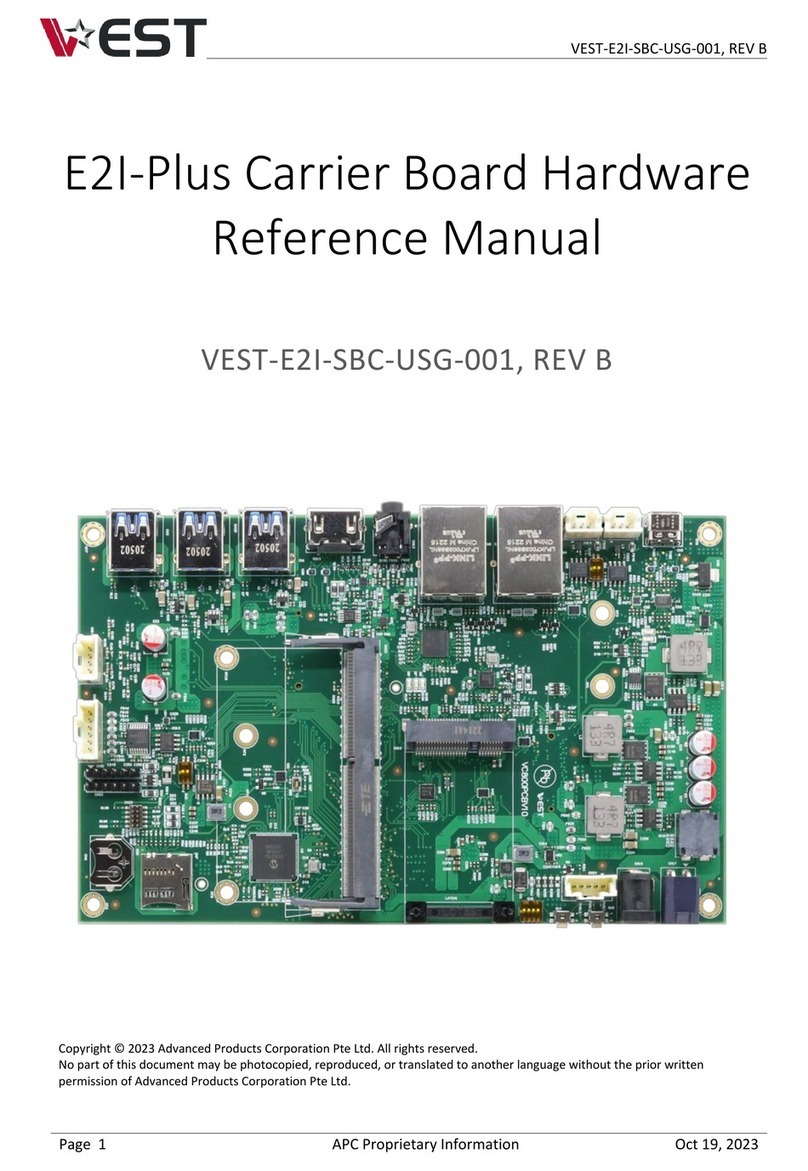
Vest
Vest E2I-Plus Hardware reference manual

Acces I/O products
Acces I/O products PCI-ICM-2S user manual
